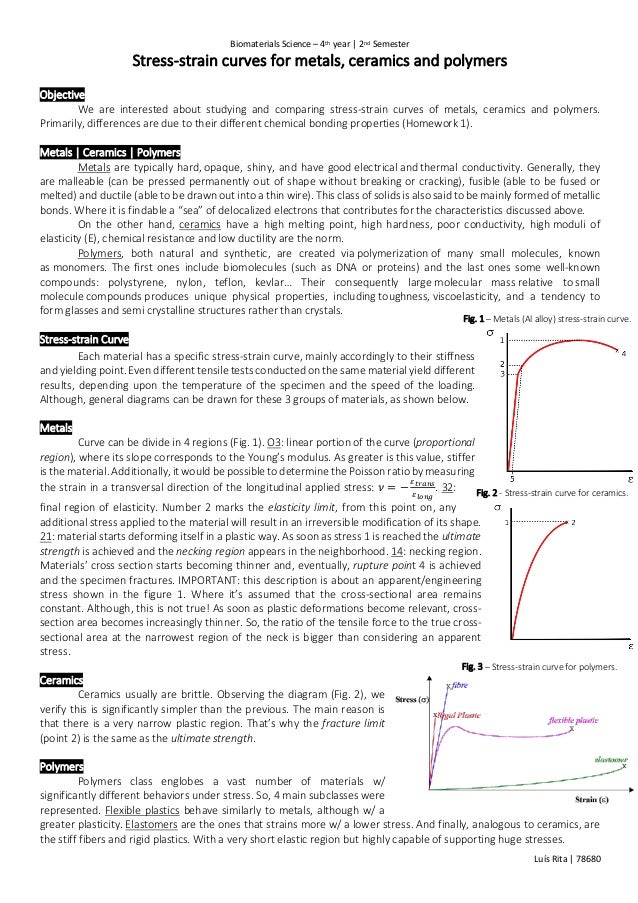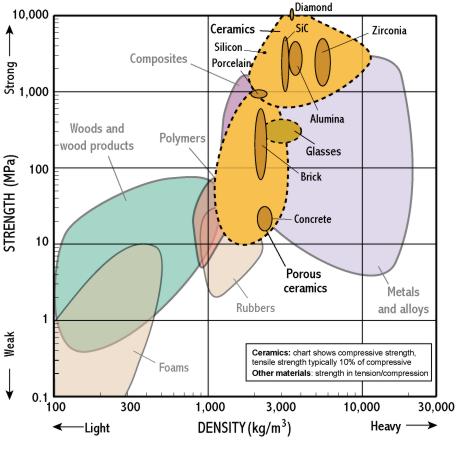Mechanical engineering q a library compare metals polymers and ceramics on a chart or table using the following properties and the ratings low high and highest.
Mechanical properties of metals ceramics and polymers.
The key difference between polymers and metals is that the polymers are lightweight materials compared to metals.
The classification of metallic materials is explained below.
One of the most desired properties of metal alloys is the hardenability.
Dense high electrical conductivity high to fair thermal conductivities.
Scissors a china tea cup a building brick a floor tile and a glass vase.
Deform under stress leading to ductile fracture.
7 22 callister rethwisch 5e.
A highly elastic polymer may stretch over 10 times the original length.
These are typical properties.
If we take a ball made of a polymer material such as plastic and a ball made of a metal with the same size we can observe that the metal ball is heavier than the plastic ball.
In general they are relatively.
Terms in this set 8 metal properties properties.
While some of the stress strain curves for polymers might look similar to ones for metals polymers are mechanically different than metals or ceramics.
Are ferrous and nonferrous metals.
It is also resistant to corrosion and permeable for microwaves.
In addition many of the polymers are extremely ductile and pliable i e plastic which means they are easily formed into complex shapes.
Alloying can be applied to metals ceramics and polymers where in each specific properties are desired.
Therefore this property of the polymer is highly advantageous because we can replace metal with plastic.
Properties of materials are classified into seven.
Majorly composed of al 2 o 3 aluminum ceramic is a dense ceramic material with excellent thermal and electrical resistance properties.
Copper is a soft malleable and ductile metal with high thermal and electrical conductivity.
Common objects that are made of ceramic materials.
Metals are of varying types and the applications of metals in the structural and mechanical work are significantly extensive however on primary basis metals can be classified in to main groups i e.
Mechanical properties of polymers.
In fact properties of ceramics and glass can be tailored to specific applications by modifying composition including creating composite materials with metals and polymers and by changing processing parameters.
Density ductility hardness corrosion resistance hardness thermal conductivity electrical conductivity wear resistance.









